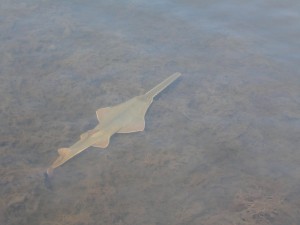Chances are you have never heard of the Smalltooth Sawfish, an endangered species most commonly found off the western cost of Florida. These creatures grow to be as long as 25 feet, but their is more that is impressive about these fish than their shockingly large size. Recent studies have shown that around 3% of Smalltooth reproduce asexually, a virgin birth. This is the first hard evidence that birth of parthenogens, offspring born of asexual reproduction, happens in nature. This speaks to the adaptability of life, scientist Demian Chapman, says that it makes sense that endangered species would be the ones most commonly reproducing asexually, “that life finds a way”. This discovery was made when researchers tagged and sampled DNA from around 190 Sawfish, which lead to the discovery of 7 parthenogens.
Scientist hypothesize that during meiosis, sex cells fused together to form offspring. Incredibly, all seven of the parthenogens are fully healthy and functioning, and seem to be viable sexual partners. This “suggests that parthenogens are not a dead end” that this “extreme form of inbreeding” does not lead to any serious defects. Unfortunately, Smalltooth Sawfish are on the verge of extinction due to human interference in their natural habitat. Although the Sawfish are able to reproduce asexually, the occurrence rate is too small to sustain a viable number of Sawfish to save them from extinction, but raising awareness of the issue could be the key to saving these magnificent creatures.



Leave a Reply